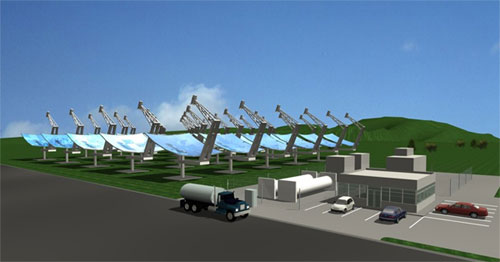Solar Powered Hydrogen Generation

Solar Powered Hydrogen Generation
Water-splitting solar cells could be an efficient method of producing hydrogen gas. By including small amounts of silicon and cobalt, engineers can grow nanostructured thin films of iron oxide that convert sunlight into the electrons needed to form hydrogen from water. Iron oxide films do this more efficiently than ever before with this material.
Hydrogen Solar Tandem Cells use sunlight to split water into hydrogen and oxygen. Nanocrystaline metal particles across their surfaces vastly increase surface area, to collect more energy from the sun. The hydrogen produced can be stored and used as fuel.
One potential challenge to overcome in the development of large scale hydrogen generation using solar panels is that the earth's supply of Gallium and indium - components of the necessary solar panels - appear close to running out. However the technology is moving forward at pace and other promising materials with which to build solar panels are being developed.